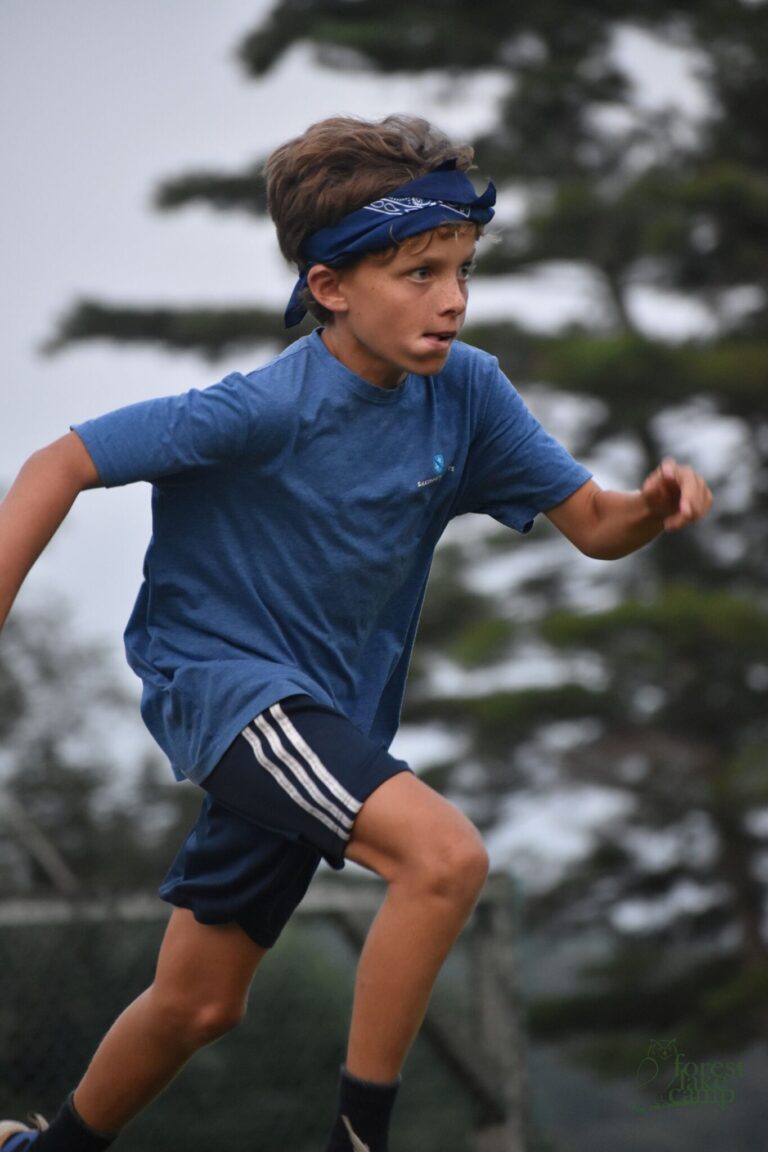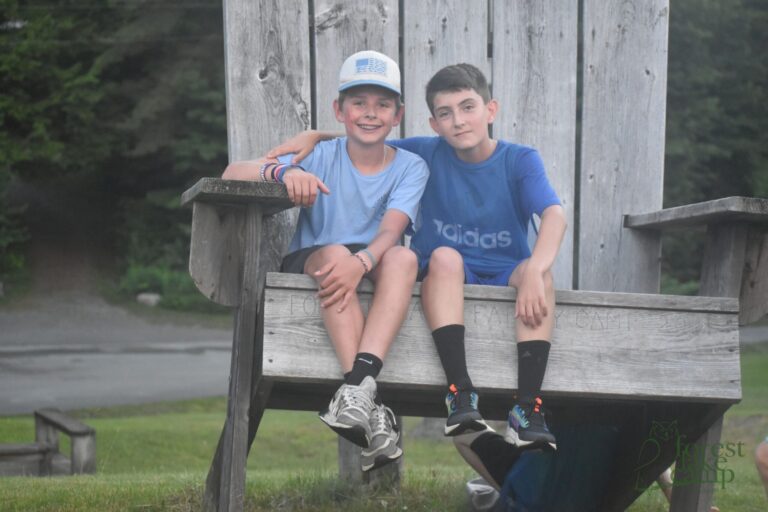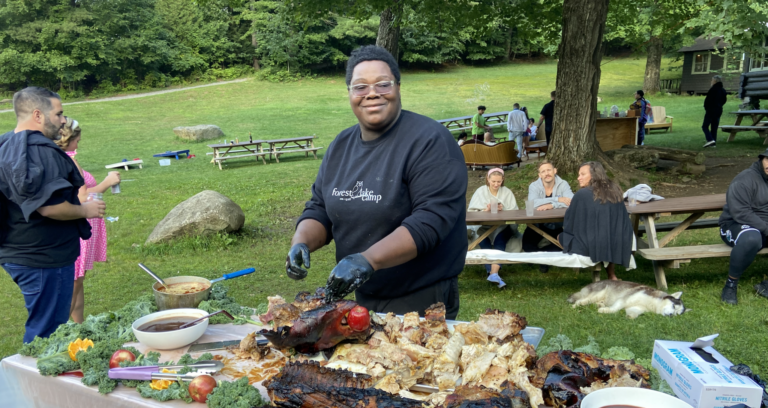We would love to receive more stories, reflections and memories from our FLC Alum. Please send along your memoires of FLC as a camper, whether it be on hiking trips, at the stables, playing sports or up at the rifle range – we would love to hear from you! You can send your stories to [email protected] . Thanks to Alum, Leuty for sharing his wonderful detail of his experience working in and Directing our Trips Program from 1952-1956.
When getting ready to receive campers for the 1952 season, Coach called me down to the Lodge Office. He explained that while I had agreed to be Assistant Trip counselor for the season there was a problem. The person who was to be Head Counselor had backed out for some reason. He wanted me to run the trip season. I thought about it and reminded him that I was a first year counselor and only 17 years old. He gave that some thought and responded that, “What we will do is send a more senior counselor with you on each trip. You will still organize and run the trips.” A neat solution. It worked. One funny outcome was when we took a canoe trip to Pharaoh Lake. A counselor by the name of Sims was designated to be my alter ego. Problem, Sims was well over six feet tall. The World War II surplus shelter half pup tents we were using were made for a six foot person. Luckily it did not rain.
1952 – de facto Head Trip Counselor
1953 & 1954 – Assistant Trip Counselor (Ted Minde Head Trip Counselor)
1955 & 1956 – Head Trip Counselor
In establishing a trip schedule in 1952, my goal was to have a trip or trip related activity each week. We would mostly alternate Intermediate Camp and Senior Camp trips, as well as Hiking Trips and Canoe Trips. This formula was followed by Ted Minde and me in ensuing years.
Trip Equipment
The main piece of gear was the Gruman Canoe Carrier with six 17’ aluminum canoes. With two counselors, each canoe trip could take ten campers.
Shelters were two person World War II shelter half tents, with sectional poles. Each person on the trip, Counselors included, would carry one half and one pole. People paired off. Each person took their half and buttoned it along the top with their tent mate’s half. The poles were in two pieces, put together and placed at each end of the tent. The tents worked satisfactorily unless it rained hard and the occupants rubbed the tent wall.
We had two WW II surplus Cooking sets. These aluminum sets included three or four nested pots and a frying pan with a handle that fit into a slot in the pots and or pan. All were contained in a cloth bag for easy carrying and storage. Rounding out the camp provided equipment was a good first aid kit.
Trip members brought their own cooking/eating set of nested pots and frying pan, and a canteen or two plus sleeping bag and knapsack.
Transportation
Coach had purchased a used Dodge truck body. To this was added a surplus WW II troop bed. This was a wooden sided structure with fold down bench seats along each side. Four wooden and metal hoops arched over the body so that a canvas top could be stretched over them in inclement weather. Coach had a wooden bench constructed that ran down the middle of the body and could seatight or so people. This bench was removable. The space created could hold back packs, etc.This vehicle had a trailer hitch to tow the loaded canoe trailer for canoeing trips.
Training
In addition to leading trips, the Trip counselors held Canoe/Boating Water Safety and Wood craft instruction sessions. No camper could go on a canoe trip or use a canoe on the lake without going through the Safety course. First, campers were taught the various paddle strokes used in canoeing. This was done on the dock at the waterfront. Then came the fun. Campers learned to handle the launch of the canoe and paddling in the canoe. Next, the two campers in each canoe would deliberately sink the canoe. They would then float in the canoe to show that they could remain safely with the craft even though it was basically underwater.
Next, the campers would attempt to empty the drowned canoe. First, by bailing which could be done, but slowly. Second, they would be instructed to get in the water on one side of the canoe. They would then roll the canoe over and get under it. Once positioned bow and stern, they would raise the canoe out of the water by kicking and then flipping the canoe over on to its bottom. Finally, they were taught to get into the now righted canoe. This required the two campers to get on opposite sides of the canoe. One camper would then roll into the canoe bottom while the one in the water held onto his side of the canoe to prevent it from tipping and filling with water again. Finally, the camper in the water would roll into the canoe while his weight shift was counter balanced by the camper in the canoe. Wood craft involved taking out a cabin of campers and showing the basics of camping. This included how to set up a tent and to ditch its edges to carry rain water away from the tent. How to build a safe fire pit. The kind of dead wood to collect for a good fire and how to build a fire in dry and damp conditions. The use of an ax, hatchet, knife, compass, and map were also covered.
Over Night Trips
Mt. Marcy – Done every year. Being a hike, this trip could take 20 or so campers on each segment. First segment, was for Seniors. We would drive to the parking area at the Adirondack Lodge Camp Ground on Monday. Then the group would hike to either the lake at the base of the Mt. Marcy Trail or all the way to the Falls, which was about three quarters of the way to the summit. At each location lean-tos were available for two nights of camping. Tuesday, we would summit and return to the camp site we had started from. Wednesday, the group would return to the base lodge area. Around noon the truck from camp would arrive with a group of Intermediate hikers. After lunch, the Seniors would depart. The second segment was comprised of Intermediates. Lodging for the Intermediate campers was in a large cabin that could accommodate the entire group. Thursday we would summit and return to the base camp. Lunch would be on the summit. Friday the truck would pick us up and we would get back to camp for lunch.
Long Lake to Tupper Lake – Done every year. A four-day trip for ten Seniors and two counselors. The trip would put in at the foot of Long Lake on Monday. The first day would consist of a paddle of the entire length of the lake and into the river that went on to Tupper Lake. A short way on the river would bring the group to a lean-to for the first overnight camp. Tuesday would traverse more of the river to another lean-to for the second night’s outing. Wednesday would see the end of the river and a paddle across Tupper Lake to a camp site on the north shore. Tents were used at this site.
After dinner, the group would paddle across the lake to Tupper Village for ice cream and a movie. Paddling back across the lake was easy in the dark. If a boat was on the lake, each camper had a flash light to warn the boater of our presence. Thursday consisted of another crossing of the lake to be picked up by the Camp truck and back to FLC.
Lake George – Camping on Long Island – Done each year. Two segment composed of Intermediates. Ten campers and two counselors to each one night segment. The group put in at a marina on the East Shore and paddled to Long Island. This is the longest island on the lake. There were numerous camp sites on the island. In the time period under review, finding empty camp sites was no problem. The group would set up tents, collect fire wood and establish the camp. Then it would explore the island and play a game: i.e., Hide & Seek. After supper, the group would walk to the south end of the island. Here was a sandy beach and a narrow channel between Long Island and the next island to the South. The beach was excellent for an evening swim. Tuesday, the first group would paddle to the marina and be replaced by a second group of ten Intermediates. The first day’s activity was repeated with the exception that the tents were already set up. Wednesday the tents were struck and packed and the camp site policed up. Next, the group would paddle back to the marina and be picked up for return to FLC.
Brandt Lake – 1954 and 1955. Ten Seniors and two counselors. Put in at the south end of the lake on Monday. Paddle about three quarters up the lake to a peninsula at the base of which was a guest house owned by parents of an FLC camper. The end of the peninsula was empty and perfect for tent camping. The balance of Monday was spent exploring the northern end of the lake and swimming. Tuesday the group hiked a nearby peak and then paddled to the south end of the lake to be picked up and returned to FLC.
Raquette Lake into Blue Mountain Lake – This trip was done in 1956. Again ten campers and two counselors participated. On Monday, the group was dropped off at a launch site at the west end of Raquette. It then paddled to the site of a former resort hotel on the south shore of the lake. The site was pretty clear since the resort had burned some years earlier. Tuesday was spent paddling through a chain of three lakes then led into Blue Mountain Lake. A camp was set up on the south shore of the lake. Wednesday was pick up day from the north shore.
Pharoah Lake – 1952. This canoe trip was done at the suggestion of the then camp caretaker, a Mr. Baker. On his assurance of easy access and good camping, ten campers and two counselors made the trip. Unfortunately, the access road was quite rutted and rugged. However, we did manage to get the canoes and boys into the lake. Our camp was set up under tents about mid-way up the lake. Two days were spent exploring this virtually people free body of water, swimming, fishing, etc. Wednesday ended the trip as usual. Ten Seniors and two counselors comprised the group.
Paradox Lake – 1955 and 1956. Comparable to the Pharoah Lake Trip.
Long Trail Trip in Vermont – 1954. This was a new hike of a section of the Long Trail in Vermont. Twelve Senior campers and two counselors traversed a section of the trail from south to north. Lean-tos along the trail were used for shelter so it was not necessary to pack tents. The author does not remember the specific points at which the trip began and ended.
Cross Brook Fishing Trip – 1956. Twelve Senior campers, two counselors and Clif Combs. This group hiked into a former home site on Cross Brook north of FLC. The group hiked into into the camping site on Monday. Monday afternoon and Tuesday were spent Brook Trout fishing, Enough fish were caught by the group that both Monday and Tuesday’s dinners were augmented by fresh, fried Brook Trout. Wednesday the campers hiked out and returned to FLC.
Day Trips
To augment the overnight schedule of trips, and to get Intermediate Campers trip experience, Day Trips were run on some Thursdays and/or Fridays.
Crane Mountain – Each year we would take a group of Intermediates and a group of Seniors and climb Crane Mountain. This was a relatively easy ascent, except for a steep section to get to the top of the Mountain. Once summited, the participants could climb a Fire Tower. The Forest Ranger on duty would then give us a talk on the Tower’s function and operation.
Schroon River Canoe Trip – Each year one or two day trips were run on the Schroon River. The trips would start in Chestertown and pull out in Warrensburg or put in north of Chestertown and pull out in Chestertown. These trips were for Intermediates.
North River (Hudson River) – This was an occasional trip. It would put in at The Glen and paddle down stream. After a gentle paddle, a swim and lunch the canoes would pull out lower down the river. There was a stretch of easy rapids along the way which added to the trip’s allure.
Bear Mountain on Lake George – A trip for Intermediates. This trip could take more than ten or twelve campers and extra counselors, as needed. The group would go to Latham’s Boat Yard in Bolton Landing, on the West shore of the lake. We would load into speed boats and be delivered to the base of Bear Mountain. There was a very good picnic area and beach here. The group would climb the mountain and tour the Fire Tower there, come down the mountain, eat lunch, and swim until time to ride the boats back to Latham’s and on to FLC.
Trips 1952-1956
By Warren Leuteritz “Leuty”





